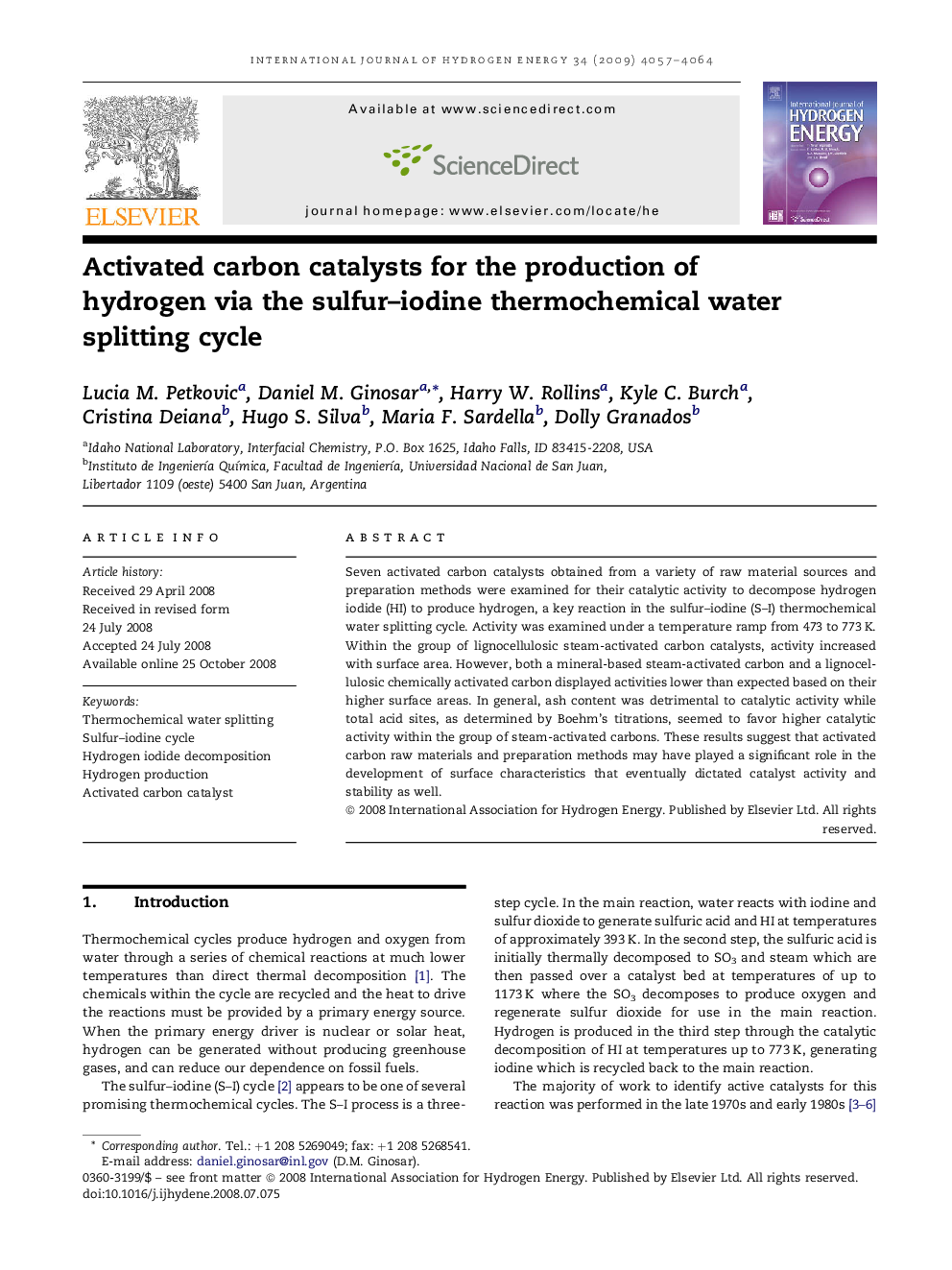| Article ID | Journal | Published Year | Pages | File Type |
|---|---|---|---|---|
| 1279041 | International Journal of Hydrogen Energy | 2009 | 8 Pages |
Seven activated carbon catalysts obtained from a variety of raw material sources and preparation methods were examined for their catalytic activity to decompose hydrogen iodide (HI) to produce hydrogen, a key reaction in the sulfur–iodine (S–I) thermochemical water splitting cycle. Activity was examined under a temperature ramp from 473 to 773 K. Within the group of lignocellulosic steam-activated carbon catalysts, activity increased with surface area. However, both a mineral-based steam-activated carbon and a lignocellulosic chemically activated carbon displayed activities lower than expected based on their higher surface areas. In general, ash content was detrimental to catalytic activity while total acid sites, as determined by Boehm's titrations, seemed to favor higher catalytic activity within the group of steam-activated carbons. These results suggest that activated carbon raw materials and preparation methods may have played a significant role in the development of surface characteristics that eventually dictated catalyst activity and stability as well.
